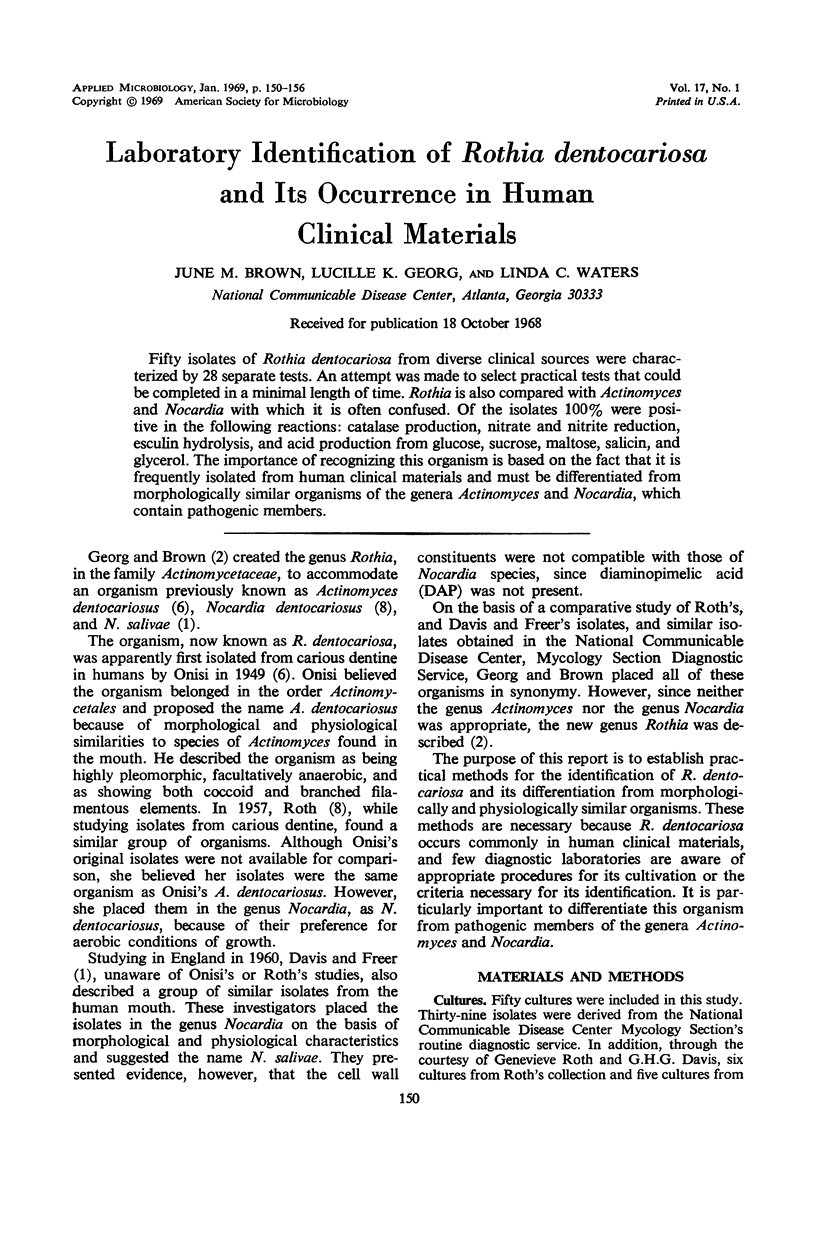Abstract
Fifty isolates of Rothia dentocariosa from diverse clinical sources were characterized by 28 separate tests. An attempt was made to select practical tests that could be completed in a minimal length of time. Rothia is also compared with Actinomyces and Nocardia with which it is often confused. Of the isolates 100% were positive in the following reactions: catalase production, nitrate and nitrite reduction, esculin hydrolysis, and acid production from glucose, sucrose, maltose, salicin, and glycerol. The importance of recognizing this organism is based on the fact that it is frequently isolated from human clinical materials and must be differentiated from morphologically similar organisms of the genera Actinomyces and Nocardia, which contain pathogenic members.
Full text
PDF






Images in this article
Selected References
These references are in PubMed. This may not be the complete list of references from this article.
- DAVIS G. H., FREER J. H. Studies upon an oral aerobic actinomycete. J Gen Microbiol. 1960 Aug;23:163–178. doi: 10.1099/00221287-23-1-163. [DOI] [PubMed] [Google Scholar]
- GEORG L. K., ROBERTSTAD G. W., BRINKMAN S. A. IDENTIFICATION OF SPECIES OF ACTINOMYCES. J Bacteriol. 1964 Aug;88:477–490. doi: 10.1128/jb.88.2.477-490.1964. [DOI] [PMC free article] [PubMed] [Google Scholar]
- HUGH R., LEIFSON E. The taxonomic significance of fermentative versus oxidative metabolism of carbohydrates by various gram negative bacteria. J Bacteriol. 1953 Jul;66(1):24–26. doi: 10.1128/jb.66.1.24-26.1953. [DOI] [PMC free article] [PubMed] [Google Scholar]
- Howell A., Jr, Jordan H. V. A filamentous microorganism isolated from periodontal plaque in hamsters. II. Physiological and biochemical characteristics. Sabouraudia. 1963 Oct;3(1):93–105. doi: 10.1080/00362176485190141. [DOI] [PubMed] [Google Scholar]
- ONISI M., NUCKOLLS J. Descriptions of actinomycetes and other pleomorphic organisms recovered from pigmented carious lesions of the dentine of human teeth. Oral Surg Oral Med Oral Pathol. 1958 Aug;11(8):910–930. doi: 10.1016/0030-4220(58)90206-8. [DOI] [PubMed] [Google Scholar]
- ROTH G. D. Proteolytic organisms of the carious lesion. Oral Surg Oral Med Oral Pathol. 1957 Oct;10(10):1105–1117. doi: 10.1016/0030-4220(57)90063-4. [DOI] [PubMed] [Google Scholar]
- ROTH G. D., THURN A. N. Continued study of oral nocardia. J Dent Res. 1962 Nov-Dec;41:1279–1292. doi: 10.1177/00220345620410060401. [DOI] [PubMed] [Google Scholar]




